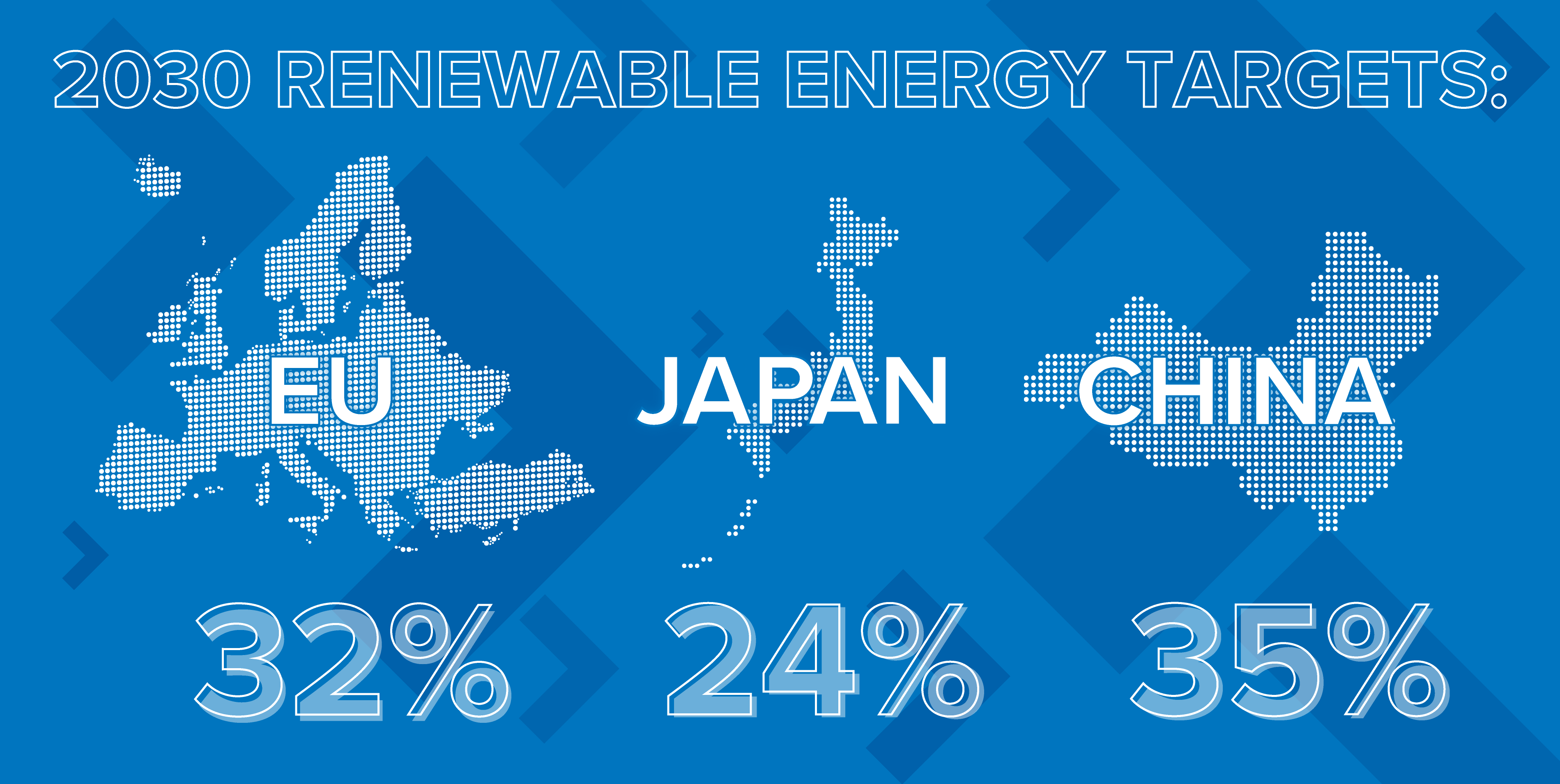All over the world countries are taking action, setting goals to reduce their environmental impact.

In both the UK and China, governments have cut subsidies to solar energy. In 2018 the number of new solar installations in the UK halved for the second year in a row.
Lack of investment in solar has had a profound effect on the job market; 8,000 jobs were lost in the US solar power sector last year, and a survey by UK job board Indeed stated that: ‘while so-called ‘green job’ openings have largely grown since 2015, roles in solar slumped by 79%’.
Even with the 2030 targets for renewable energy in place, these figures highlight the decline of solar over the last few years. The need for talent has ‘slumped’ as businesses have failed to see the benefits of investing in solar power as a renewable energy option.
What is the Future of Solar?
Despite these statistics painting a bleak picture for solar energy, research shows that 2019 is due to be a year of growth for the industry.
According to Energy Research consultants Wood Mackenzie, 2019 will see new solar capacity break the 100 GW barrier for the first time. By 2023, they expect installations to settle at around 115 to 120 GW.

What is Causing the Positive Turn in Solar?
Unsurprisingly, the change in the industry largely comes down to cost.
Analysis by BNEF shows that it will cost 71% less to build a new solar plant in 2050 than it does today. Solar power has become a viable energy option for a number of businesses due to these dramatically falling costs. A study by Deloitte found that solar has reached grid price parity and is moving closer to performance parity with traditional energy production methods. The International Renewable Energy Agency discovered that in the next decade alone, the cost of solar energy is set to decrease by around 60%.
Making solar power more accessible and affordable to both businesses and consumers will undoubtedly lead to a need for more skills and job openings in the industry, as money and investments boom.

Even with last year’s slump, solar power still accounts for 2.4% of electricity generation in the US. This means that the solar industry employs twice as many people as the coal industry, and five times as many as the nuclear industry.
What Can Businesses Do?
Seeing a decline in solar energy, many businesses are not investing in recruitment in this sector. With the 2018 loss of jobs still fresh in the minds of business owners – solar is not seen as a sector that will offer great returns.
However, there is no ignoring the pressure to move to renewable energy.
In the commercial sector, a new initiative called RE100 has been taken up by some of the largest global brands. RE100 is an initiative in which 100 of the most influential global businesses commit to using 100% renewable energy by the year 2030. With huge corporations such as BT and Unilever committing to fully converting to green energy, it won’t be long before other businesses follow suit.
It is important that businesses are ready to take advantage of the opportunities that the return of solar energy will bring. Companies who invest in training and recruitment in (the much more affordable) solar will have all of the resource in place to capitalise this year as solar power makes its comeback.
Having an organisational structure, and the right talent in place to support and develop the use of solar power is a priority for businesses if they aim to reduce their environmental impact and hit emissions targets in the long run.
Conclusion
Hiring and training the best talent in solar gives businesses a head start in this re-emerging market. The plummeting price of solar power has led to it becoming a viable energy production option, in some cases more so than traditional methods.
With the move to renewable energy being a huge global issue in both business and politics, the demand for specialists in this market is set to grow exponentially in the next decade.
CSG have a dedicated team within the Renewables sector working specifically in the solar market. Our Renewables team are seeing a surge in companies hiring for positions in solar energy, aiming to prepare their businesses for the future. We have a proven track record when it comes to placing high-level senior professionals in business-critical roles, accompanied by a thorough understanding of the solar market. We work in partnership with our clients to develop their recruitment strategies, placing them in the best position to capitalise in a changing market.
If you would like to discuss the future of your business, or are looking to recruit senior level professionals in the solar industry, I can be contacted on dominic.ridley@csgtalent.com or +44 (0) 333 323 2000.
References
PV Magazine, Solar will rebound this year with more than 100 GW of new capacity
Clean Technica, Solar Breaks The 100 Gigawatt Barrier In 2018, Could Reach As High As 140 Gigawatts In 2019
Brink News, Why Are Top Companies Pushing for 100 Percent Renewable Energy?
Deloitte, Global renewable energy trends
AJC, We have 12 years left to act on climate change, UN warns
Engadget, China bumps up renewable energy target to reduce reliance on coal
Forbes, Why Did China Tap The Brakes On Its Solar Program?
Business Insider, The US has added more solar power than any other type of electricity in 2018 so far — more evidence of an energy revolution
The Guardian, EU raises renewable energy targets to 32% by 2030
The Guardian, UK solar power growth halves for second year running
The Guardian, Solar energy sector lost 8,000 jobs in US last year, but future looks bright – report
Glassdoor, The Future of Solar Energy Jobs: Bright or Mostly Overcast?






